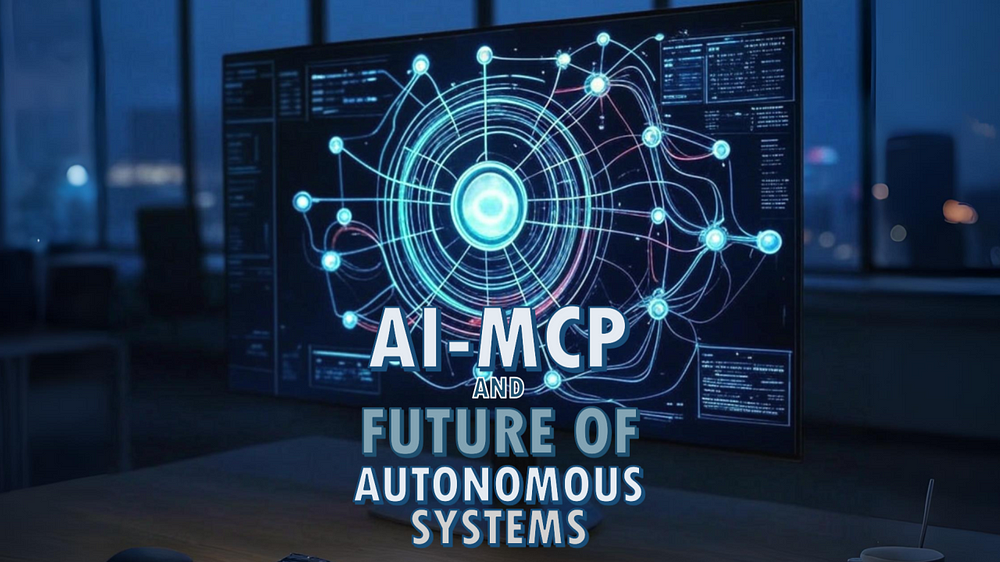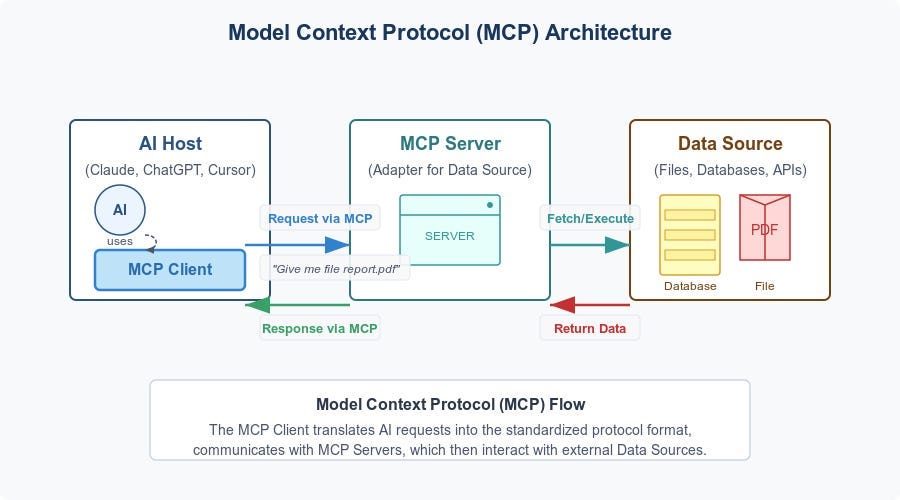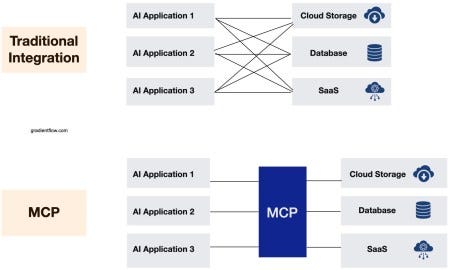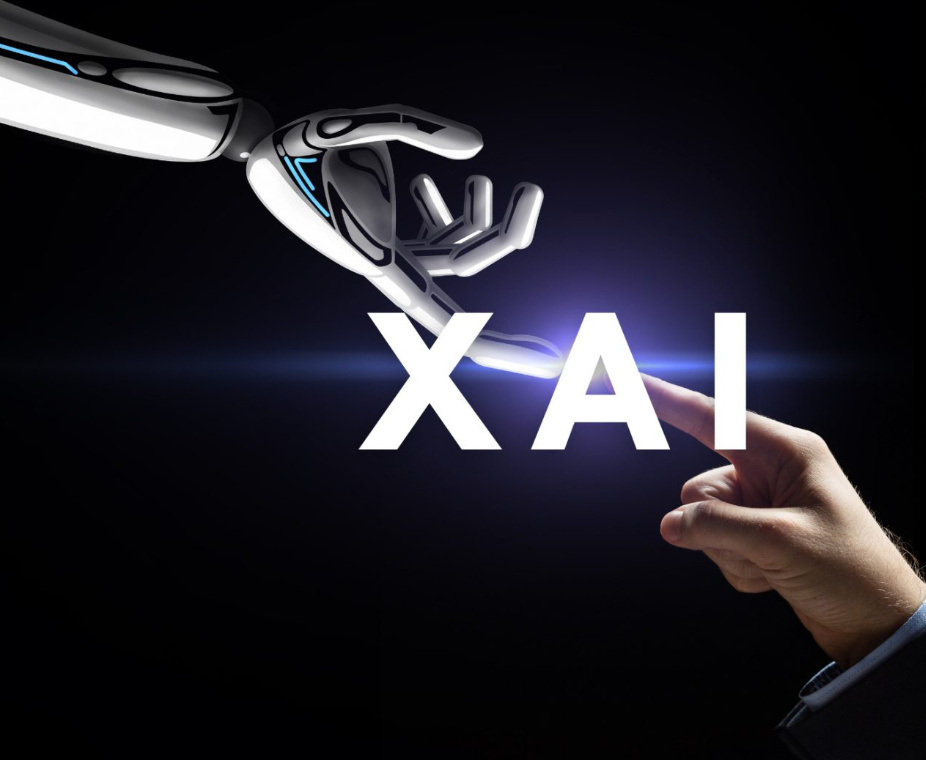Bridging the Gap: Understanding the Model Context Protocol (MCP) in the World of AI

In the rapidly evolving landscape of Artificial Intelligence, the ability of models, particularly Large Language Models (LLMs) and sophisticated AI agents, to interact with the real world and access relevant information is paramount. For a long time, this interaction has been a patchwork of custom integrations, each requiring significant development effort and posing scalability challenges. Enter the Model Context Protocol (MCP), a groundbreaking open standard designed to streamline how AI models connect with external data sources and tools, ushering in an era of more context-aware, versatile, and efficient AI applications.

Think of the incredible potential of AI — the ability to analyze vast datasets, generate creative content, automate complex tasks, and provide insightful answers. However, the power of an AI model is often limited by the information it has been trained on. To truly unlock their potential in real-world scenarios, these models need access to up-to-date, specific context — information that lies beyond their initial training data. This could be anything from a customer’s purchase history to the latest news articles, internal company documents, or the current status of a database.

Historically, connecting AI models to these diverse sources of information has been a complex endeavor. Developers had to build custom Application Programming Interfaces (APIs) for each specific data source or tool they wanted the AI to interact with. This approach was not only time-consuming and resource-intensive but also created a fragmented ecosystem, hindering interoperability and scalability.
The Model Context Protocol (MCP) emerges as a solution to this challenge. Developed by Anthropic and gaining increasing traction across the AI community, MCP provides a standardized framework for AI models to interact with external systems. It acts as a universal interface, simplifying the process of connecting AI with the information and tools it needs to perform effectively.
Imagine this analogy: Think of your computer. It can connect to a vast array of peripherals — printers, keyboards, external hard drives — thanks to standardized interfaces like USB. Before USB, connecting each new device required a specific port and driver, creating a tangled mess of cables and compatibility issues. MCP aims to be the “USB-C for AI,” providing a common protocol that allows AI models to seamlessly connect with a wide range of external resources.

The Core Concepts of MCP
At its heart, MCP revolves around a few key components that work together to facilitate communication between AI models and external systems:

1. MCP Servers: These are lightweight applications that act as intermediaries between an AI model and a specific data source or tool. An MCP server exposes the functionalities and data of the underlying system in a standardized format that an MCP-compliant AI model can understand. For example, you might have an MCP server for:
- A Database: Allowing the AI to query and retrieve information.
- A CRM System: Enabling the AI to access customer data and update records.
- A Web API: Providing the AI with real-time data from external services.
- Local Files: Granting the AI access to documents and other local resources.
These servers handle the complexities of interacting with the specific backend system, translating the AI’s requests into the appropriate format and relaying the response back to the AI.
2. MCP Clients: These are the AI applications themselves, such as Large Language Models, AI agents, or AI-powered tools, that are built to communicate using the MCP protocol. An MCP client can discover and connect to available MCP servers, send requests for information or actions, and process the responses it receives.
3. MCP Hosts: These are the overarching AI applications or platforms that manage the connections between MCP servers and clients. They might handle tasks like server discovery, authentication, and routing requests to the appropriate servers.
The Communication Flow:
The interaction between an AI model (MCP client) and an external system (accessed via an MCP server) typically follows these steps:
- Discovery: The MCP client (AI model) might discover available MCP servers through a registry or configuration.
- Connection: The client establishes a connection with the relevant MCP server.
- Request: The client sends a request to the server, specifying the information it needs or the action it wants to perform. This request is formatted according to the MCP protocol.
- Processing: The MCP server receives the request, translates it into the language of the underlying data source or tool, and performs the necessary operation.
- Response: The server formats the result according to the MCP protocol and sends it back to the client.
- Utilization: The MCP client (AI model) receives the response and uses the information to generate more informed outputs, make better decisions, or complete the requested task.
Why is MCP a Game Changer for Data Science and AI?
The adoption of the Model Context Protocol offers a multitude of benefits that can significantly impact the field of data science and AI:
1. Enhanced Contextual Awareness: The primary advantage of MCP is its ability to provide AI models with access to relevant, up-to-date context. This allows LLMs, for instance, to move beyond their static training data and leverage real-time information, internal knowledge bases, and specific user data to generate more accurate, relevant, and personalized responses. Imagine a customer service chatbot that can access a customer’s order history and the latest product information to provide truly helpful support.
2. Simplified Integration and Reduced Development Time: Building custom integrations for each data source is a significant time and resource investment. MCP standardizes this process, allowing developers to connect AI models to a wider range of systems with significantly less effort. This accelerates the development cycle for AI-powered applications and reduces the complexity of managing numerous individual integrations.

3. Improved Interoperability: By providing a common communication protocol, MCP fosters greater interoperability between different AI models, tools, and data sources. This allows for the creation of more complex and sophisticated AI systems where different components can seamlessly interact and share information. Imagine a multi-agent system where different AI agents, each specialized in a particular task, can communicate and collaborate effectively using MCP.
4. Enhanced Security and Control: MCP includes built-in mechanisms for authentication and authorization, allowing for more secure access to sensitive data and tools. This is crucial for enterprise adoption of AI, where data privacy and security are paramount. Administrators can define granular access controls, ensuring that AI models only have access to the information and functionalities they need.
5. Scalability and Maintainability: A standardized protocol simplifies the process of scaling AI applications as the need for more data sources and integrations grows. It also makes the systems easier to maintain and update, as changes to individual data sources are less likely to break the communication with the AI models.
6. Fostering Innovation: By lowering the barrier to connecting AI with external resources, MCP encourages innovation in the development of new AI applications and use cases. Developers can focus on building the core intelligence of their models without getting bogged down in the complexities of data integration.
Real-World Applications and Use Cases
The potential applications of MCP are vast and span across various industries:
- Enterprise Knowledge Management: AI models can leverage MCP to access internal documents, wikis, and databases to answer employee questions, retrieve relevant information, and streamline knowledge sharing.
- Customer Service: AI-powered chatbots can use MCP to access customer profiles, order history, and real-time inventory data to provide personalized and efficient support.
- Sales and Marketing: AI agents can use MCP to access CRM data, marketing analytics, and social media trends to identify leads, personalize marketing campaigns, and improve sales effectiveness.
- Financial Services: AI models can use MCP to access market data, financial reports, and regulatory information for tasks like risk assessment, fraud detection, and investment analysis.
- Healthcare: AI systems can use MCP to access patient records (with proper authorization), medical literature, and diagnostic tools to assist healthcare professionals in providing better patient care.
- Robotics and Automation: Robots and automated systems can use MCP to access real-time sensor data, control systems, and task specifications to perform complex tasks more intelligently and adaptively.
The Growing Ecosystem and Future of MCP
While still relatively new, the Model Context Protocol is gaining significant momentum within the AI community. Its open-source nature encourages collaboration and adoption across different organizations and platforms. As more developers and companies embrace MCP, we can expect to see a flourishing ecosystem of MCP servers, clients, and supporting tools.
The future of MCP likely involves:
- Wider Adoption: As the benefits of MCP become more apparent, its adoption across the AI landscape is expected to grow significantly.
- Enhanced Functionality: The protocol itself may evolve to support more complex interactions, data types, and security features.
- Integration with More Platforms: We can anticipate deeper integration of MCP with popular AI development platforms and cloud services.
- Community Contributions: The open-source nature of MCP will likely lead to significant contributions from the community, driving innovation and expanding its capabilities.
Addressing Potential Challenges
While MCP holds immense promise, there are also potential challenges to consider:
- Complexity of Server Development: While MCP simplifies the client-side integration, developing robust and secure MCP servers for diverse backend systems can still be complex.
- Security Considerations: Ensuring the security of communication and access control across various MCP servers and clients is crucial and requires careful implementation.
- Performance Overhead: Introducing an intermediary layer (the MCP server) might introduce some performance overhead, which needs to be carefully managed for latency-sensitive applications.
- Standardization Efforts: While MCP aims to be a standard, achieving widespread agreement and adherence across the industry will require ongoing collaboration and community effort.
Conclusion: Embracing a More Connected AI Future
The Model Context Protocol represents a significant step forward in the evolution of AI. By providing a standardized and efficient way for AI models to interact with the external world, MCP unlocks new possibilities for building more intelligent, context-aware, and versatile AI applications. As the adoption of MCP continues to grow, it promises to bridge the gap between the vast potential of AI and its practical application in solving real-world problems across diverse industries. For anyone involved in data science or AI development, understanding the principles and potential of MCP is becoming increasingly essential for navigating the future of intelligent systems. It’s a foundational piece in building a more connected and capable AI ecosystem.
Sources: diamantai.substack.com, linkedin.com, bootcamptoprod.com, gradientflow.com, wikipedia.com
Compiled by: Shorya Bisht

No comments:
Post a Comment